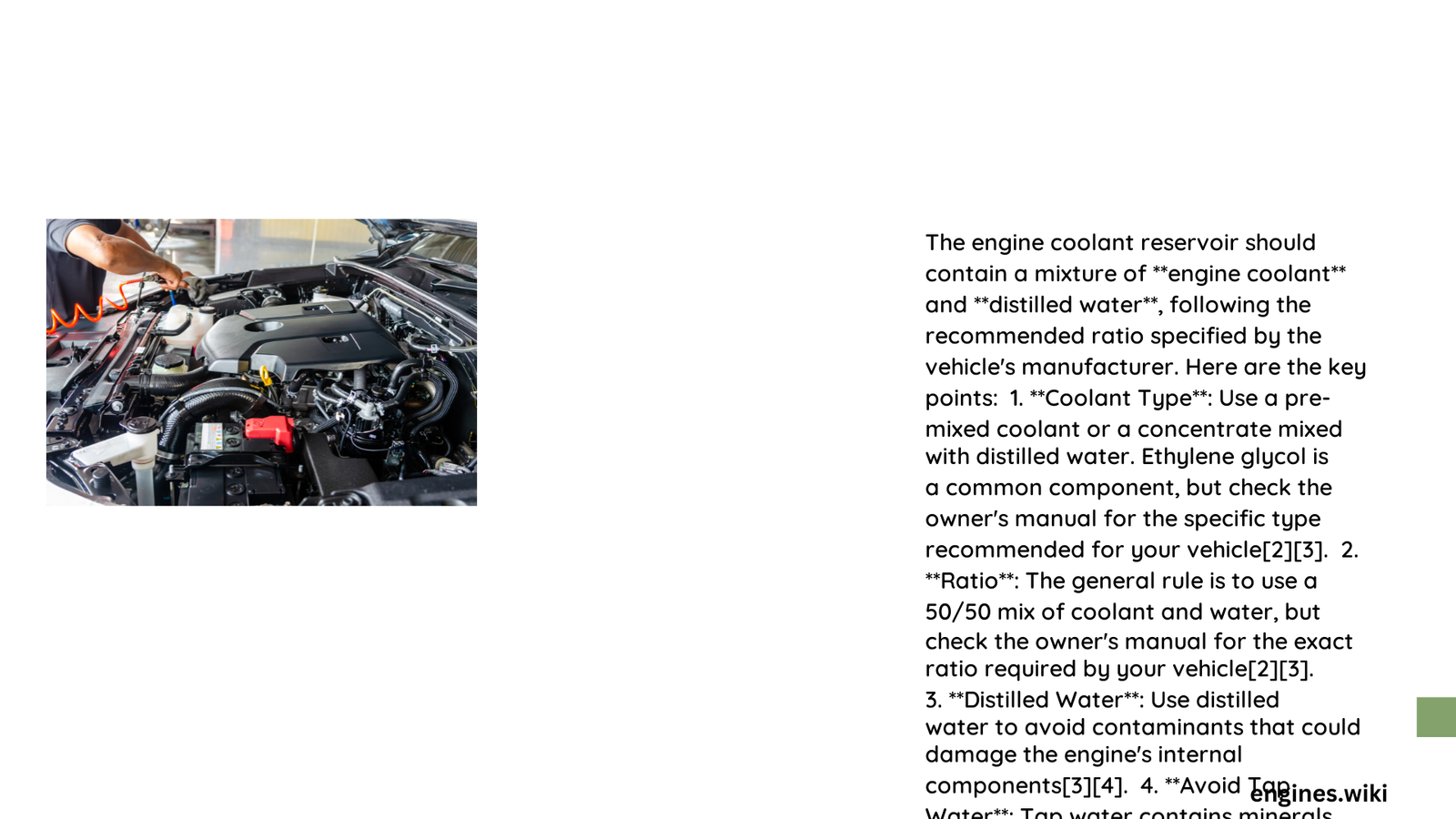Engine coolant reservoirs are critical components in maintaining optimal vehicle temperature, requiring precise selection of coolant mixtures that protect against freezing, overheating, and internal corrosion. Understanding the right type, mixture, and maintenance of coolant can significantly extend your engine’s lifespan and prevent costly mechanical failures.
What Exactly Goes into an Engine Coolant Reservoir?
Types of Coolant Compositions
Engine coolant reservoirs are designed to accommodate specific types of coolant mixtures, each with unique chemical properties:
Inorganic Acid Technology (IAT) Coolant
- Primary Components:
- Ethylene glycol base
- Inorganic additives
- Phosphates
- Borates
- Silicates
Organic Acid Technology (OAT) Coolant
- Primary Components:
- Ethylene or propylene glycol
- Organic acids (sebacate, 2-EHA)
- Extended corrosion inhibitors
Hybrid Organic Acid Technology (HOAT) Coolant
- Primary Components:
- Mixed organic and inorganic additives
- Silicates
- Organic acid compounds
Recommended Coolant Mixture Ratios
| Coolant Type | Glycol Percentage | Water Percentage | Temperature Range |
|---|---|---|---|
| IAT | 50% | 50% | -38°C to 109°C |
| OAT | 50% | 50% | -38°C to 109°C |
| HOAT | 50% | 50% | -38°C to 109°C |
How to Choose the Right Coolant?

Vehicle-Specific Considerations
- Older Vehicles: Prefer IAT coolants
- Modern Vehicles: Recommend OAT or HOAT
- Aluminum Components: Use silicate-free or phosphate-free variants
Coolant Reservoir Capacity Guidelines
- Sedans: 4-6 liters
- SUVs: 6-8 liters
- Trucks: 8-12 liters
What Are the Best Practices for Coolant Maintenance?
Checking Coolant Levels
- Inspect reservoir when engine is cool
- Check against minimum and maximum marks
- Verify color and consistency
Flushing Recommendations
- IAT Coolants: Every 2 years or 25,000-30,000 miles
- OAT/HOAT Coolants: Every 5 years or 50,000 miles
Warning Signs of Coolant Issues
- Unusual color changes
- Visible corrosion
- System leakages
- Inconsistent engine temperature
Pro Tips for Optimal Coolant Performance
- Always use manufacturer-recommended coolant
- Maintain proper 50/50 mixture ratio
- Use distilled water for mixing
- Avoid mixing different coolant types
- Regularly inspect cooling system components
Potential Risks of Incorrect Coolant
Consequences of Poor Coolant Selection
- Engine overheating
- Corrosion of internal components
- Reduced heat transfer efficiency
- Potential complete engine failure
Conclusion
Selecting the right coolant and maintaining proper mixture is crucial for your vehicle’s long-term performance and reliability. Always consult your vehicle’s manual and consider professional advice when in doubt.
